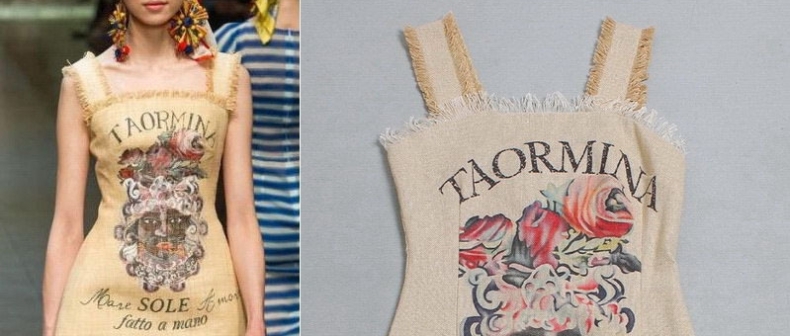
“M-O-L-L-I-E” I spell out to the man at the front desk. “It should be a heavy box about thiiis big,” I motion with my hands. He disappears into the back room as I wait anxiously for my parcel. Two drawn-out minutes later, he emerges carrying a box with my name on it.
Before the apartment door even clicks shut, I’ve already pried off the tape, breaking a nail in the process. So worth it.
I lift up the cardboard flap and am in awe. I yank them from their crepe paper wrappings and shove them on my feet; it’s a perfect fit. After five years of saving, dreaming and checking Ebay almost daily, I finally have my dream Chloé boots from the 2007 fall line.
‘But why didn’t you get the Jeffrey Campbell Tardy?’ I’m sure some people will wonder. ‘They look practically identical,’ some could say. I waited, patiently for the Chloé boots because they were the shoes I originally obsessed over, not the knockoff Campbells and because they were in my reasonable price range.
I can’t say the same for the Ann Demeulemeester fall 2008 triple lace-up boots. Currently, I am wearing triple lace boots, but they aren’t Ann D. The Demeulemeester boots run at around $2000 and up for a pair, which is not in the income bracket of my immediate future. So, instead of allowing this trend to pass me by, I went on the hunt for a decent, second choice pair of knockoffs from L.A.M.B. But you can bet your mother’s uncle that if I had the money to spend, the Ann D. boots would be on the top of my list.
The sad thing is that my L.A.M.B. boots could easily pass for the real Demeulemeesters if I just painted the zipper black. Herein lays the age old debate regarding knockoffs.
Morally, I don’t want to support the blatant rip-off of creative individuals, but fiscally, my wallet secretly thanks the lesser brands for providing me with the trends I crave at a reasonable price. Coco Chanel famously said,” Imitation is the highest form of flattery”–a phrase that makes Toronto-based fashion designer Lucian Matis cringe. Matis has first-hand experience with being knocked off and says he didn’t find it flattering for very long.
“I recall seeing one of my dresses in a store in a different colour, fabric and label but the design was definitely mine,” he said. “Did it make me happy? Yeah, for about five seconds and then I was ticked.”
For years, designers and politicians have been fighting for fashion copyright protection because, right now, there is hardly any.
The Canadian Copyright Act says that once an article of clothing is reproduced more than 50 times, it cannot be copyrighted and therefore is open to anyone who chooses to make a knockoff. “Law treats fashion designs as functional items, not works of art, and functional items are generally only protected via patent,” says Kal Raustiala, law professor and co-author of The Knockoff Economy: How Imitation Sparks Innovation.
Raustiala opposes the Innovative Design Protection Act. Put forth for the second time by New York Senator Chuck Schumer, the Act aims to protect fashion design in the U.S. for three years after its creation. To file a copyright infringement claim, the designer would first have to give written notice to the alleged infringer, who then has 21 days to resolve the issue before the suit can be filed. However, with the next meeting of Congress being declared a ‘lame duck’ session, it is unlikely that it will become law this time around.
Raustiala believes that while knockoffs do hurt some designers, they are necessary for the growth and success for the fashion industry. In economic terms, protecting fashion with copyright would result in a loss of profit for the fashion industry because knockoffs help move the fashion cycle forward and spread trend awareness to lower income brackets.
When a manufacturer copies a designer garment with cheaper fabrics and markets it to the masses for a lower price, soon the piece becomes obsolete and the designer is challenged to create something new, says Raustiala.
However, the laws aren’t so relaxed overseas.
“In some countries, such as France, there is already strong copyright protection,” says Raustiala. “There, it has had little effect. But in the U.S., with our very aggressive lawyers and pro-plaintiff legal system, I think the effects [of legally protecting knockoffs] would on balance be harmful to consumers and to small firms. Protecting fashion designs via copyright is unnecessary and, in the U.S. at least, unwise.”
Matis disagrees. “Direct duplication should have consequences,” he says. “Yes, this probably would be a costly endeavour, but originality and respect for someone’s ideas would get more applause.”
Matis says that when designers are knocked off, they are unlikely to receive due credit for their designs and creativity. “The oversaturation of a particular look can drown out any real artistic merit,” he claims.
Without any current protection, big-name brands also face the short end of the stick when it comes to defending their designs in court. Fast-fashion brand Forever 21 has been sued more than 50 designers including Anna Sui and Diane von Furstnberg. Each case has been settled out of court with Forever 21 being declared the victor by the media.
“I never purchase any fashion magazines or go into fashion stores for that very reason,” said Matis. “I don’t want to be influenced and be accused of copycatting.” Because–as Matis knows–designers aren’t just suing lower-end brands; they’re also suing each other.
Left: Dolce and Gabbana Spring 2013. Right: Floral Print Flax Fringes dress on eBay $78.
In 2011, Christian Louboutin famously sued Yves Saint Laurent for selling red-soled pumps; a known attribute of Louboutin shoes. After a year and a half of back-and-forth lawsuits, the struggle ended in October where both camps wound up both losing and winning. Louboutin was granted the right to remain the sole producer of red soles, but only if the upper of the shoe is a contrasting colour to the lower. Hence, YSL can continue producing monochromatic red shoes with matching red soles.
Though YSL’s camp declared itself the winner, the media noted that this was a huge step toward better fashion copyright laws with Louboutin at the forefront.
“Copying has an upside as well as a downside; innovation and imitation are two sides of a coin rather than inherently opposing concepts. I am not pro-copying. But I do think that in many fields creativity thrives despite or even because of copying, and we need to calibrate our intellectual property system to better take into account these effects,” says Raustiala
Julio Reyes, noted fashion blogger, stylist, and member of Yorkdale’s Style Team, believes that, instead of knockoffs, designer collaborations with fashion retailers such as H&M and Target, “allow the mass consumer to have a designer-approved wardrobe without the price tag.”
“These collections end up being sold out instantly,” he adds.
Like Raustiala, I understand that designers are hurt by knockoffs, but I do not think that banning them completely would do the trick. Hiding out from influence, like Matis, could hinder the creative process and hurt designers even further. Also, like Matis, I believe that laws are too relaxed when it comes to knockoffs and there should be a way for designers to receive credit for their original designs.
But the ultimate truth is, when it comes to fashion, profit trumps creative property. And, for now, Forever 21 will continue to triumph over almost any lawsuit thrown their way and near-exact copies of runway looks will still be found on eBay.
____
Mollie Paige interns for Toronto Standard. You can follow her on twitter @MolliePB
For more, follow us on Twitter @TorontoStandard and subscribe to our newsletter.














